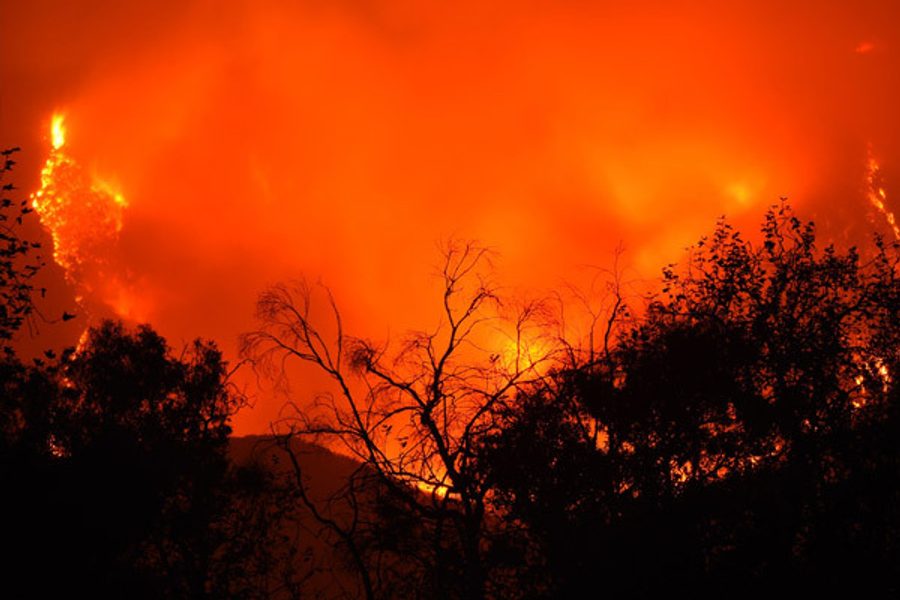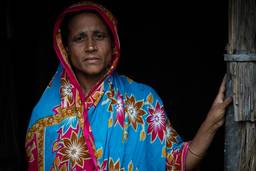In Defense of Wildfire
What climate activists, right-wing loggers and Smokey Bear get wrong
Joseph Bullington

In 1972, the year of its centennial, Yellowstone National Park embarked on a radical experiment — to let wildfires do what, until the 20th century, they had been doing in the park’s forests since those forests sprouted in the wake of retreating glaciers some 14,000 years ago.
Under the “natural fire” policy, the National Park Service allowed lightning-caused fires to run their course on certain lands. The U.S. government, it seemed, was learning what Native Americans and the land itself had long known: that wildfire is a healthy and undeniable part of wild ecosystems.
For 16 years, Yellowstone’s experiment with natural fire went on without major controversy. That changed in the summer of 1988. Unusually dry conditions combined with unusually high winds to fuel several large wildfires, most of which were not part of the park’s natural fire program. The Park Service began aggressively suppressing all fires in Yellowstone on July 21, but with little effect. By the time rain and snow stopped the fires’ spread in mid-September — accomplishing what $120 million and 10,000 firefighters could not — nearly 800,000 of Yellowstone’s 2.2 million acres had burned.
Critics denounced the fires as the destruction of Yellowstone. “Much of this beloved natural wonderland died this summer,” began a Chicago Tribune report, headlined “Requiem for a National Treasure.” The editors attacked “the folly” of the Park Service’s “excessive ecological idealism.” Wyoming’s senators demanded the resignation of the director of national parks, William Penn Mott Jr. (He refused.)
More was at stake, however, than an agency’s reputation. In question was the place of wildfire, and wildness, in natural landscapes.
The deadly fires in northern California in fall 2017 pushed wildfire back into the national consciousness. Driven by drought conditions and the strong Diablo winds, the fires ripped through Mendocino, Napa and Sonoma Counties, burning 245,000 acres, including vineyards, businesses and whole neighborhoods. The fires destroyed more than 8,000 structures and killed 43 people, making them the deadliest in California history. Though they took fewer lives and made fewer headlines than the California blazes, last summer’s fires in Montana burned 1.2 million acres. Nationally in 2017, wildfires burned more than 8.8 million acres.
In the debate ignited by these fires, some climate activists have added wildfires to the list of evidence for human-caused climate change. Some conservatives have blamed the fires on environmental protections that, they argue, have hindered the logging operations needed to keep forests clear of fire fuels.
Few have shown much interest in understanding wildfire, its ecological role or how recent human activity has thrown us into conflict with this ancient force.
The idea that wildfire is simply bad and should be suppressed is relatively new to North America. Long before European colonization, Native Americans recognized the rejuvenating power of wildfire and started fires of their own to shape the landscape and encourage the flourishing of favored plants and game.
The dawn of widespread fire suppression can be traced to the summer of 1910, when a series of large fires blackened swaths of the Northwest. The “Big Burn” rattled the country at a time when the U.S. Forest Service, only a few years old, was struggling to justify its existence to a skeptical Congress. The agency argued that, with enough resources, it could virtually eliminate wildfire.
For the next 60 years, the Forest Service sold itself as a fire suppression agency that could protect the nation’s valuable timber. In 1935 it adopted the “10 a.m. policy” — wherever and whenever a wildfire broke out, it was the Forest Service’s goal to control it by 10 a.m. the next morning. In the 1940s, the agency introduced one of the most effective propaganda campaigns in U.S. history: Smokey Bear. With his simple and ubiquitous slogan — “Only You Can Prevent Forest Fires!” — Smokey convinced people that wildfire was an ugly thing, like littering, that could and should be stopped.
Thankfully, Gary Ferguson, author of Land on Fire: The New Reality of Wildfire in the West, reveals Smokey Bear for what he really is: a traitor to his own kind. “Being a creature of the woods,” Ferguson writes, “Smokey might well have known what it would take humans longer to understand — that fire can in a lot of cases be a blessing.”
The ponderosa pine, an icon of the West, is recognizable for its thick, reddish, spongy bark and tall, barren trunk topped by a mane of branches and needles. These characteristics are not arbitrary. The bark insulates the trunk from fire, and the shedding of lower branches prevents ground fires from climbing to the canopy and killing the tree.
Other species don’t survive fire — they thrive in its aftermath. In Yellowstone’s lodgepole pine forests, for example, between 38 and 58 percent of the trees produce resin-sealed seed cones that open only through exposure to the heat of fire. Vast lodgepole forests like those in Yellowstone have adapted not only to low-intensity burns that clear the forest of dead wood and undergrowth, but also periodic “stand replacement fires” — big burns that kill swaths of old trees and seed the next generation.
A year after the Yellowstone fires, a research project found lodgepole pine seeds sprouting at the rate of 300,000 per acre. “Not only were transitional plants — fireweed, currant, raspberry — abundant within just a couple of years of the burn,” writes Gary Ferguson, “but also the vast majority of greater Yellowstone was on its way to rebuilding the same mix of vegetative communities that were present before the burn.”
Nor did the fires do much harm to wildlife. According to Ferguson, only two species suffered significant population declines due to habitat loss: capshell snails and moose. Nutrient-rich grasses, favored by elk and bison, sprouted profusely from the blackened ground, and increased sunlight along streams fed more algae, which fed more insects, which fed more trout and birds.
Ferguson says that while the media response to Yellowstone’s 1988 fires may have soured many people on the idea of natural fire, scientists who documented the recovery grew more convinced than ever that fire plays a vital ecological role in the landscape.
In the arid West, the process of decay is hobbled by lack of water, which is essential to the digestion of bacterial and fungal decomposers. There, wildfire largely takes the place of decay in the cycle of life: It frees and recycles the carbon and other life-fueling nutrients locked up in trees and other plants. As from a decaying nurse log in a temperate rainforest, new life often blooms from the scorched ground in the wake of a wildfire. In his essay “The Fire of Life,” fire historian Stephen J. Pyne puts it this way: “Combustion takes apart what photosynthesis puts together. It is among the most elemental of biochemical reactions; when it occurs in cells, we call it respiration, and when it occurs on landscapes, we call it fire.”
Whatever we may prefer to think, people are not independent from the mutual relationship between fire and life. James C. Scott argues in his recent book, Against the Grain: A Deep History of the Earliest States, that biologically modern humans would not exist without wildfire. “Our ancestors,” Scott writes, “could not have failed to notice how natural wildfires transformed the landscape: how they cleared old vegetation and encouraged a host of quick-colonizing grasses and shrubs, many bearing desired seeds, berries, fruits and nuts.” Learning from wildfire, and initially using flames captured from wildfires, early humans shaped lands to attract more of the plants and the animals they liked to eat.
At some point, our ancestors also began exposing raw food to fire. By externalizing the digestive process, cooking allowed humans to eat a wider range of foods, to get more nutrients from a smaller quantity of them, and to expend fewer calories doing it. As a result, Scott writes, we have a gut less than half as large as our primate cousins — and a much larger brain.
Fire is arguably the tool that allowed humans to conquer the world. “Tool,” however, is not quite the right word. Fire is, at best, a “semi-domesticate,” Scott writes, “appearing unbidden and, if not guarded carefully, escaping its shackles to become dangerously feral.” This, it seems, is the deal.
When humans break this deal by trying to bring fire more firmly under control, the consequences tend to be far-reaching. “Ironically,” Ferguson writes, “the most significant result of suppressing all wildfires has been to create extraordinarily flammable forests.”
In a September 2017 Washington Post op-ed, “The American West Is Burning,” Sen. Steve Daines (R-Mont.) laments, “The treasured forests and skylines I have loved all my life may not look the same for my grandchildren.” Daines blames the fires on “fringe environmentalists” for holding up logging operations in Western forests and allowing fire-fuel buildup. He advocates opening national forests to extensive logging.
Gary Ferguson says a mechanical thinning operation would require a road-building program so large as to be both impractically expensive and undesirable, because it would destroy the essence of roadless wilderness areas. Logging also removes trees from the forest, while fire recycles trees into homes for birds, food for insects, and nutrients for other trees and plants.
Daines also conveniently ignores the other major reason we have seen record-setting fire seasons in recent years: human-caused climate change. As Ferguson notes, the fire season today is longer than it was in 1972 by about 10 weeks. Western forests tend to become fire-prone within a month of the disappearance of mountain snowpack, and snowpack is melting several weeks earlier than in the 1970s. On the other end, hot and dry conditions are persisting longer into fall.
Many climate activists, however, promote the dangerous logic that recent wildfires are unnatural — a mere symptom of human-caused climate change. In “Season of Smoke,” her September essay for The Intercept, Naomi Klein only mentions the ecological role of fire as a qualifier to her point that these fires are the shudders of a dying planet. She warns us that wildfires “threaten” Glacier National Park and includes interruptions from her 5-year-old son, who wonders, “What about the animals?”
Her essay is largely preoccupied with the summer’s wildfire smoke — which Klein deems “#fakeweather, a mess in the sky created, in large part, by toxic ignorance and political malpractice.” This story is a useful addition to an arsenal of reasons to act against climate change, but it traffics in an easy and false narrative: wildfire is bad, it destroys forests, and humans can and should control it.
Knowing the value of wildfire, however, does not make the job of wildland firefighters less complicated, especially these days. One wildland firefighter, who asked to remain anonymous because he is not allowed to talk to the press, explained to me that the decision of whether to suppress a fire or let it burn can be as difficult as predicting the future. For example, what starts as a small lightning-strike fire in the backcountry could, under certain conditions, flare into a big fire that threatens structures and requires a lot of work and money to contain. Before it blew up, the small fire could have been an easy, in-and-out job for smokejumpers — the elite firefighting crews that parachute into roadless areas to fight fires.
The job of keeping wildfire away from people is more difficult now than ever because more people than ever live in the “wildland-urban interface” (WUI) — areas where human structures abut undeveloped wildlands. Developers are rapidly expanding these borderlands: Since 1990, wildlands have been converted into WUI at an average rate of 3 acres a minute. WUI now makes up about 9 percent of the landmass of the contiguous United States and contains 38 percent of all homes. As of June 2015, less than 10 percent of WUI communities had adopted building codes designed to mitigate wildfire risk.
Ferguson’s book is wonderfully practical, even in the face of such staggering figures. A bright yellow page is reserved for the “Top 10 Ways to Protect Your Property from Wildfire” — the kind of checklist you could rip out and hang on the fridge. But his focus on the narrowly practical seems to shield Ferguson from discussing the obvious but politically heretical problem — namely, too damn many people are moving into the WUI and more houses will burn because of it.
When asked about this, Ferguson agreed that “heretical” was the right word for such a diagnosis. He thinks, though, that a lot of good can be done by educating people to fire-proof their homes and by requiring WUI developers to adhere to fire-prevention building codes.
This is, essentially, the calm, complicated, practical message with which Ferguson leaves us at the end of the book: In this land of wildfire it is up to us, not fire, to adapt. He quotes the plant ecologist Frank Egler: “Ecosystems are not only more complex than we think. They’re more complex than we can think.”
“When you accept that,” Ferguson tells me, “when we approach these problems with some humility … then we do start to honor the natural world by being complex ourselves.”
Joseph Bullington grew up in the Smith River watershed near White Sulphur Springs, Montana. He is the editor of Rural America In These Times.








